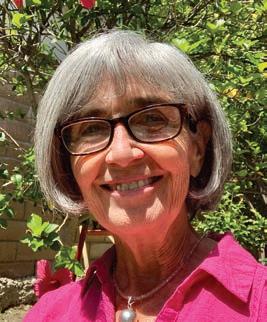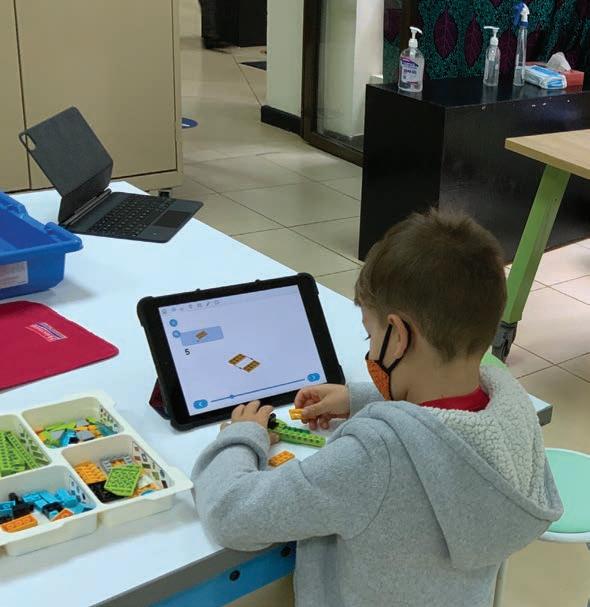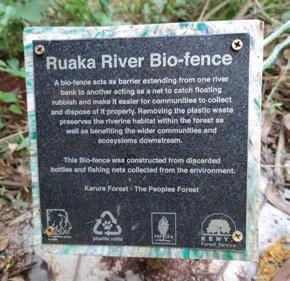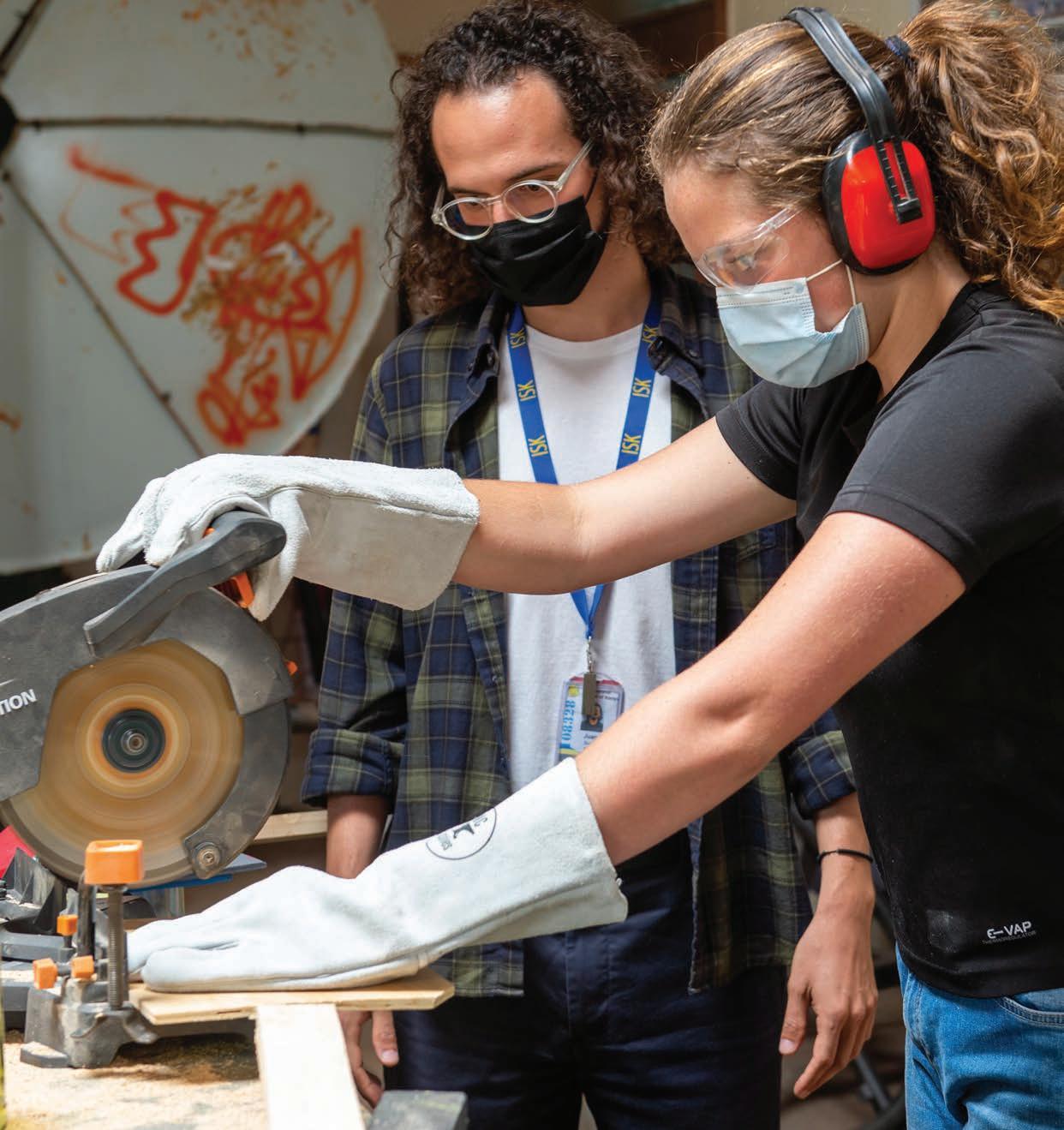
5 minute read
Technology Department Report
Kathleen Chromicz
K - 12 Technology Integration Coordinator

Douglas Irish
Director of Technology
Challenges of COVID-19 as Catalysts for Technology Integration
The challenges presented by COVID-19 in the 2020-2021 school year provided many unique opportunities for leveraging technology to provide innovative pathways for student-centered teaching, learning, and assessment. Teachers, administrators, and students used a design cycle approach to collaboratively generate strategies that engaged the learning community. They tested these strategies and iterated them for better results. As our Dynamic Distance Learning (DDL) program evolved, teachers and students sharpened their listening and communication skills through various technology platforms, constantly adjusting so that students’ social and emotional needs were also given high priority. Teachers researched and attempted new digital strategies to encourage remote student collaboration through online platforms such as Padlet, collaborative digital whiteboards, and small group breakout rooms. Students were

eager to document and digitally share their learning and choosing tools of their choice. They were keen to produce concerts and performances using Zoom, fully planning and managing themselves. This time of creativity and flexibility to experiment with technology launched new ways of teaching and learning, providing a wider choice for students to show their growth in individual ways. Parents, who are important partners, were invited to technology training to help them flatten this steep learning curve. We placed emphasis on streamlining digital workflows. This involved creating collaborative agreements for a standardized setup of Google Classroom for Middle School student success, posting Zoom links and assignments in SeeSaw, producing Elementary School newsletters that communicated in a consistent way, and establishing office hours for studentteacher consultations. Divisional documents for DDL included common agreements and mapped out the variety of digital resources available at each division with tutorials.
STEM classes and co-curricular activities were adapted for remote participation and collaboration. Students collected Arduino Boards and M-Bots from ISK so that they could create and program at home. They sent their 2D and 3D designs for projects to their teachers so that they could be laser cut or 3D printed. One teacher even streamed the 3D printing job so that the students could learn the settings and enjoy watching their projects emerge. High School Game Design students held virtual interview sessions with students in Third Grade classes to discuss their favorite games, superhero characters, and academic subjects in which they like to play games. This market research helped the High School students create prototype games for the third graders to test. Middle School students used Kahoot to create competitions for House events. Virtual co-curriculars included Elementary School Coding, Middle School Game Design, Middle School Personal STEM Projects, Middle School/High School Plastiki Rafiki, High School HandOut, and High School Design Studio. When students were allowed on campus in January, a hybrid teaching and learning model was developed. By this time, flexibility and adaptation of teaching and learning had become an acknowledged strength. The Tech Team rallied to create and share resources that supported all levels for hybrid learning. Just in time, training was available for all teachers, and a great deal of sharing occurred spontaneously among colleagues. Tech Support members spent the December Break making adjustments to classroom technology, accommodating the new classroom layouts to meet school COVID-19 safety guidelines. The hybrid model helped students who were in the classroom to learn to collaborate with those at home. Middle School robotics easily pivoted to the hybrid model. Students at home and at school programmed their individual mBots, writing code, and practicing missions. Students collaborated virtually and in-person to debug their code and demonstrate progress. Technology also generated more diverse assessment strategies. Reflection, sharing work and receiving feedback evolved throughout the year. Elementary School students learned to explain their work to their teachers and parents through SeeSaw. High School STEM students began using a new portfolio platform called bulb.

This platform was also effective for students who might have trouble organizing work and reflecting upon it. Several teachers explored how to use the platform to collect evidence and reflect for their own Personal Learning Journeys. Bulb also has a parental component where they can give feedback to their children. It even includes a personal portfolio for the parent. Although the Middle School / High School bulb portfolio rollout was intended to take place this year, the full rollout will take place during the 2021-2022 school year. Our Design Spaces for each division were heavily used during the third quarter when in-person learning resumed, in addition to being utilized remotely. Elementary School students designed their Day 8 projects in Elementary School MakerSpace. High School students constructed two bio-fences to collect floating rubbish in the Ruaka River, on the boundary of Karura Forest.


Other students independently initiated projects like: o Experimenting with a bioplastics system that produces biodegradable products from food waste.
o Working with local organizations to find ways to prevent fire ants from invading turtle nests in Watamu and Diani Beach.
o Designing a charcoal cooler for transporting vegetables to rural areas using
Boda Bodas.
Middle School and High School Technology and Art teachers are excited about increased experiential and integrated learning opportunities that will result from the approved moves for the High School Design/Fab Labs and High School Art, as well as for the Middle School Innovation Studio for the 2021-2022 school year. In retrospect, the year of COVID challenged us to apply more transformative uses of technology. Looking ahead, a school-wide Technology Action Team has been meeting this semester to design ways forward for intentional transformative integration of technology at ISK. The team’s focus is to align and integrate technology into the overall ISK learning program. If we recognize and use technology as an accelerator that deepens learning and engagement, we will have met our goal.

During 2020-21, the Technology Department also improved system security by completing the internal and external security audit and acting on recommendations made. The department even installed a new, nextgeneration firewall/filtering solution. The new Middle School building is covered with WiFi 6 networking and large-screen TVs in the classrooms. A new phone PBX system is being implemented, and our Internet bandwidth is now up to over 600 Mbps. ISK has upgraded to Google Workspace Enterprise for Education and partnered with InfoSec to bring faculty and staff targeted electronic security training. We are looking forward to a larger, more centralized help desk in 2021-22 that will be located just outside the library.











